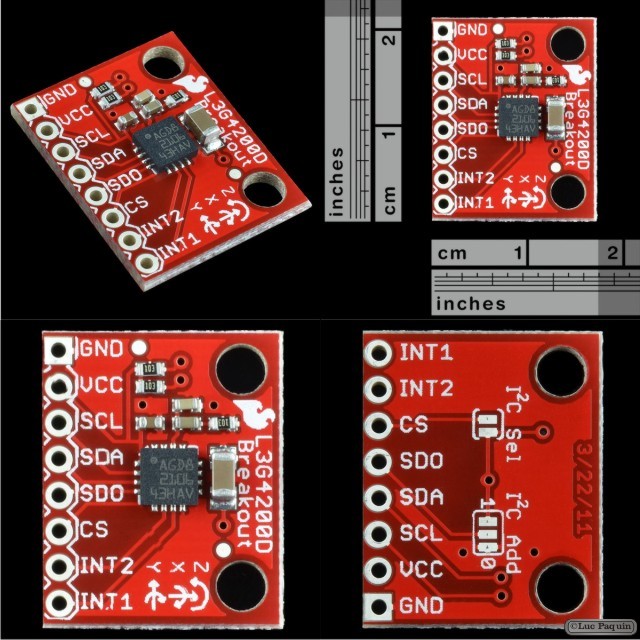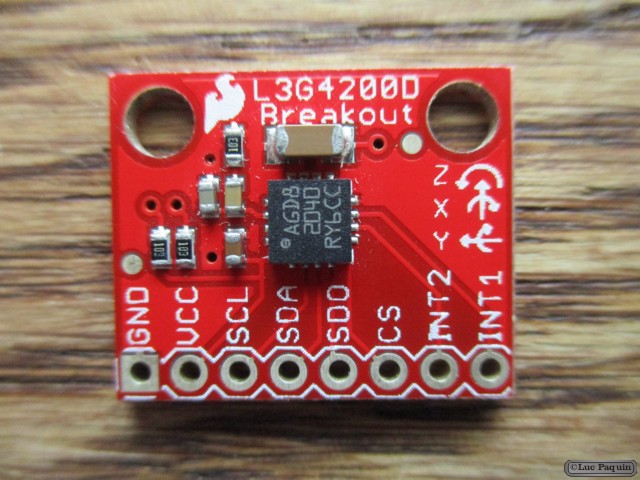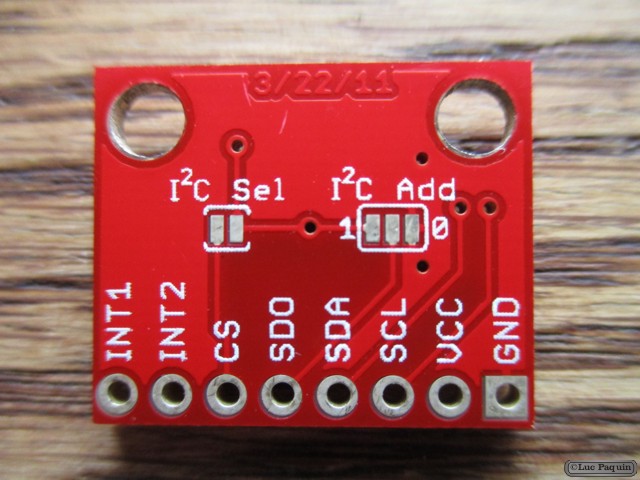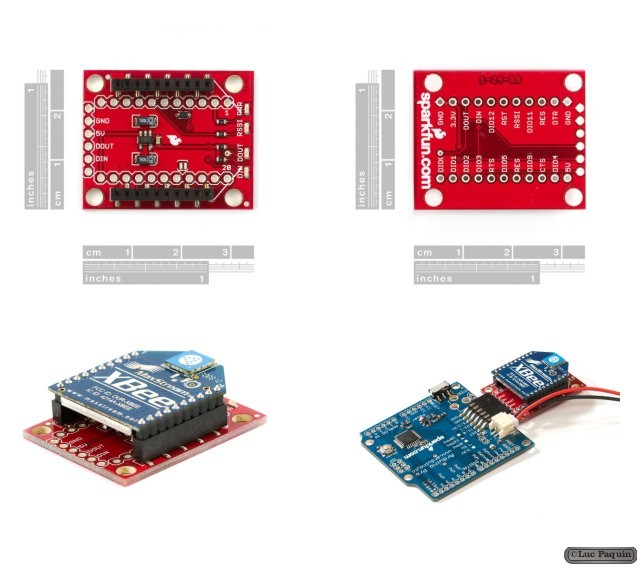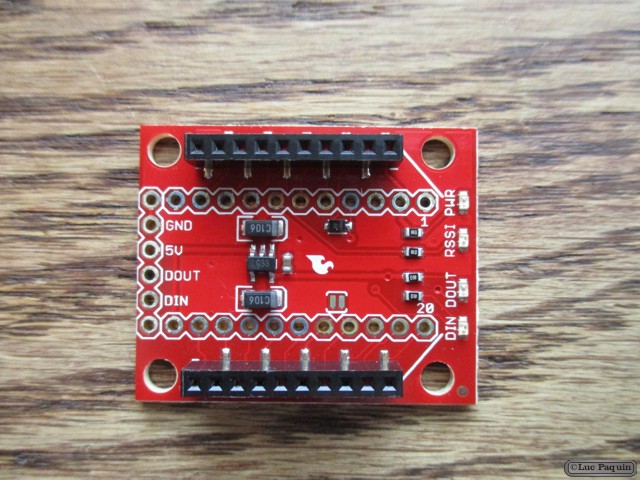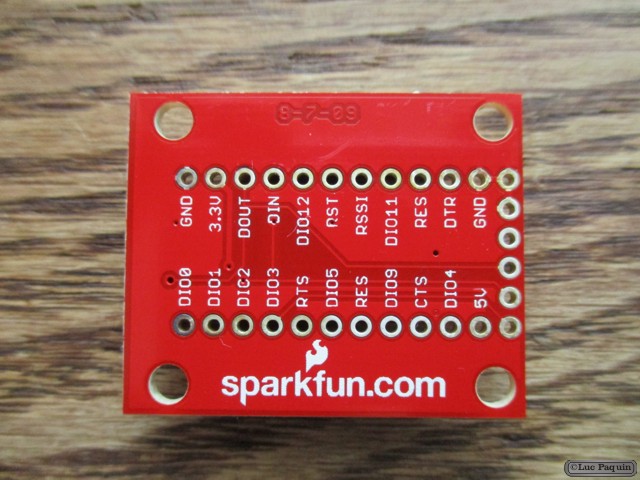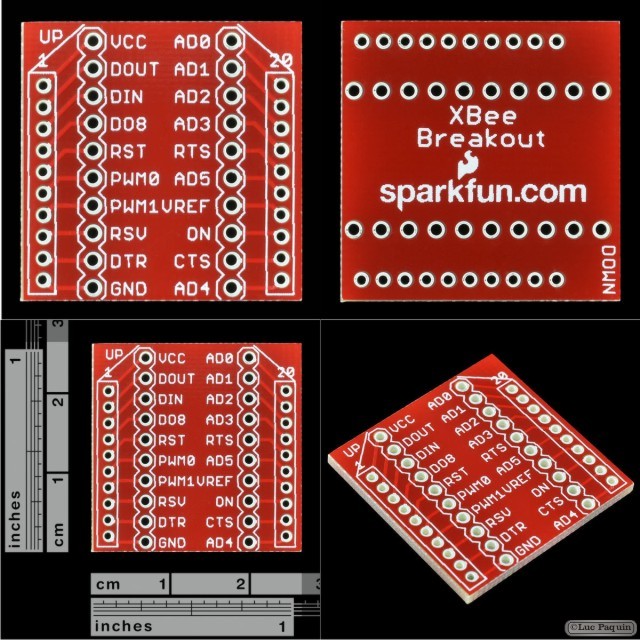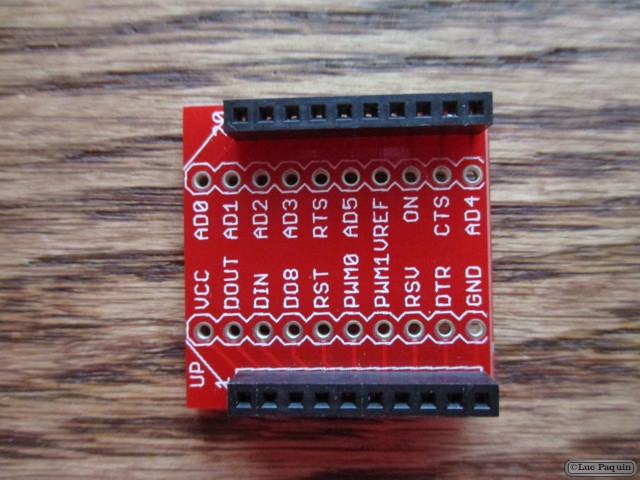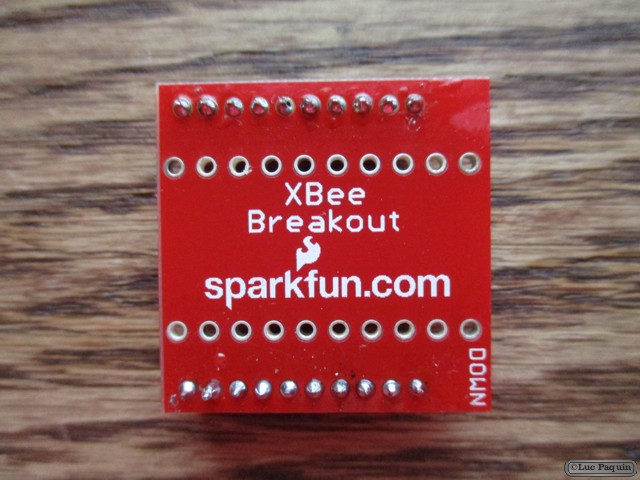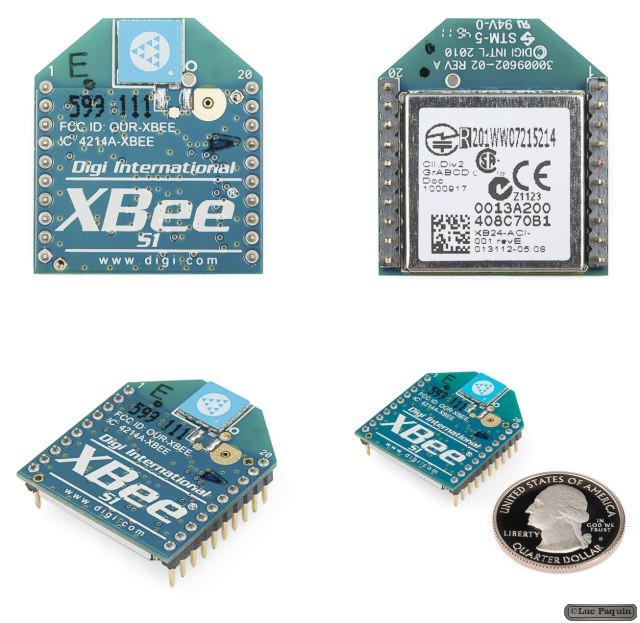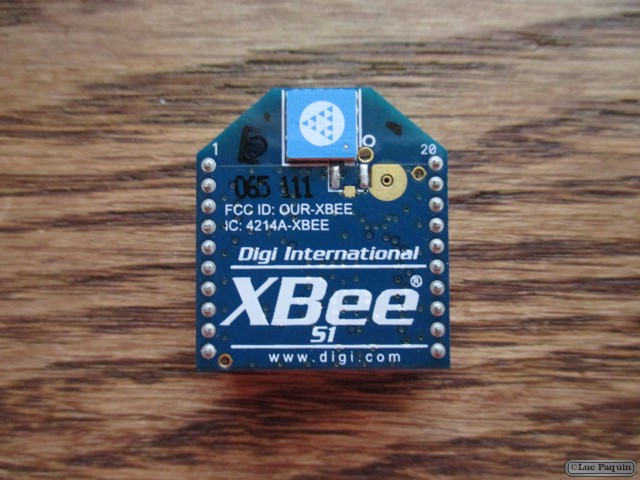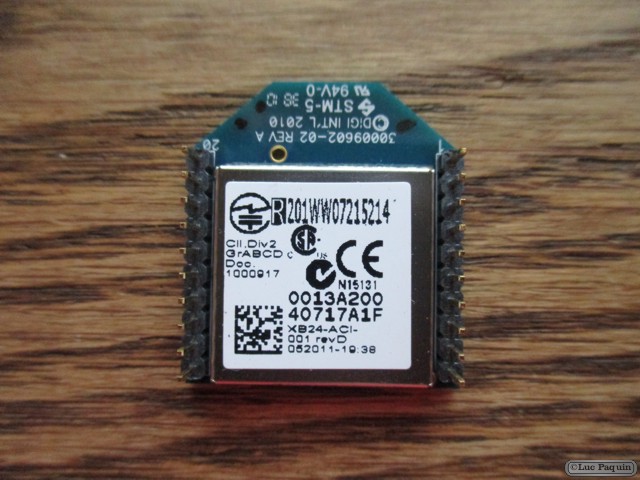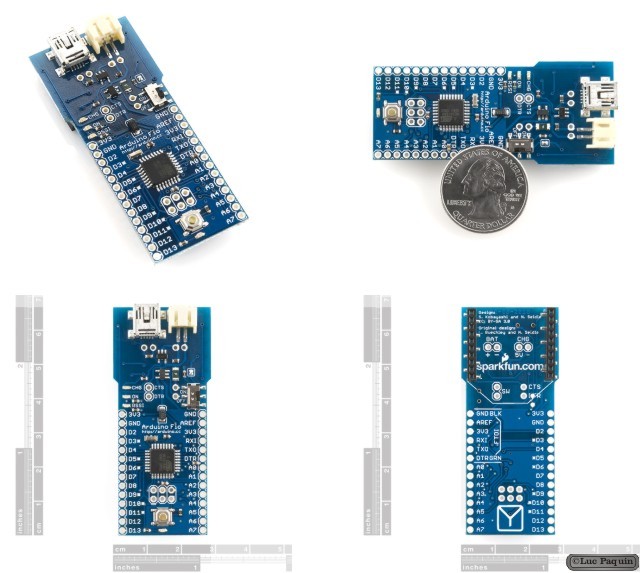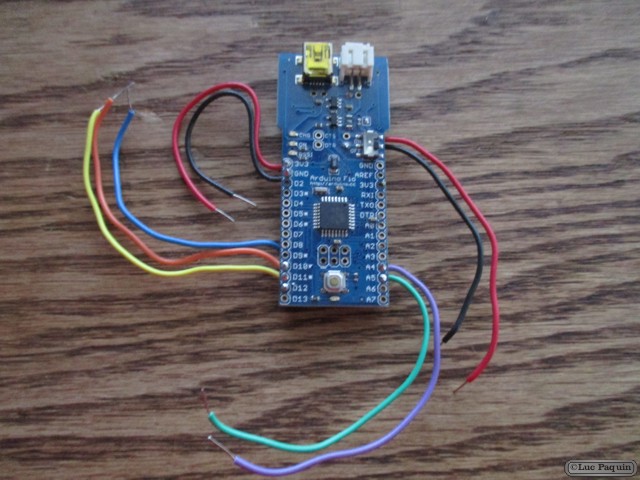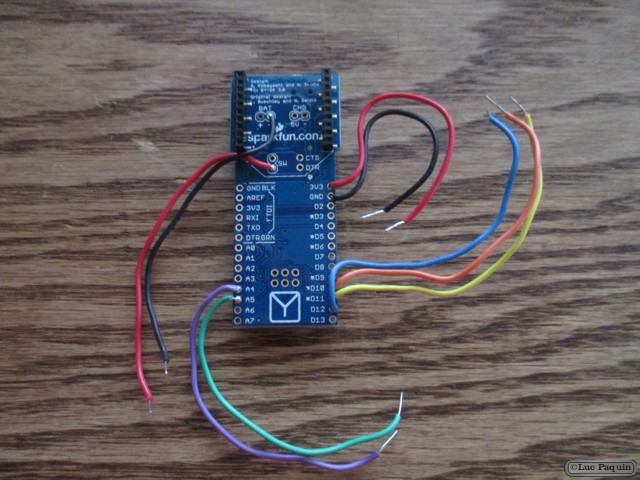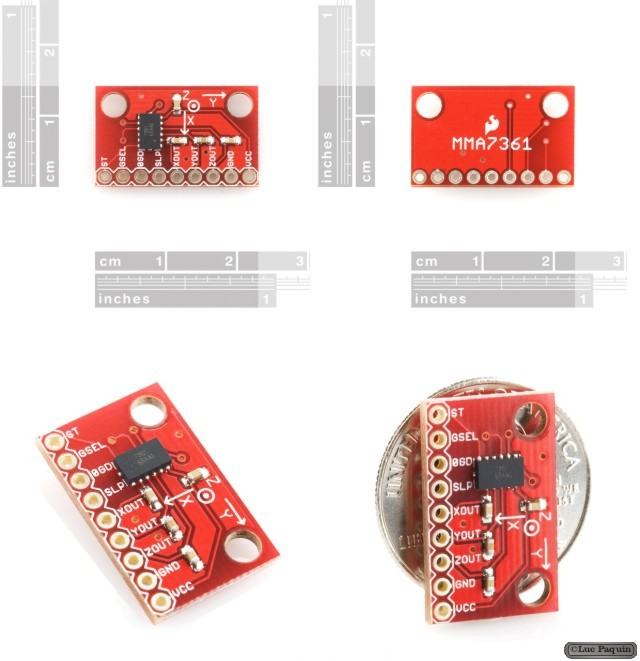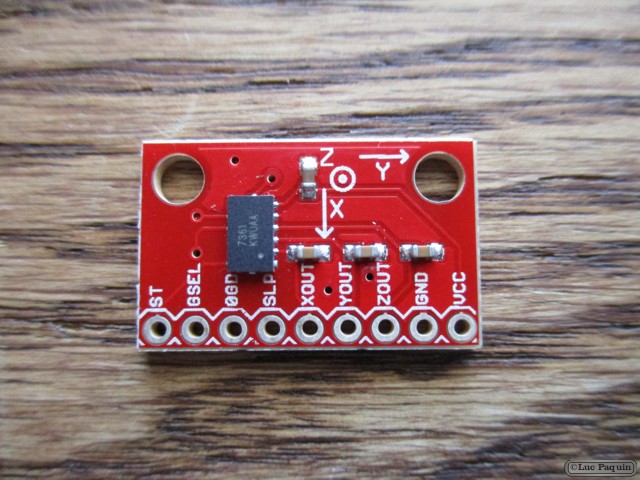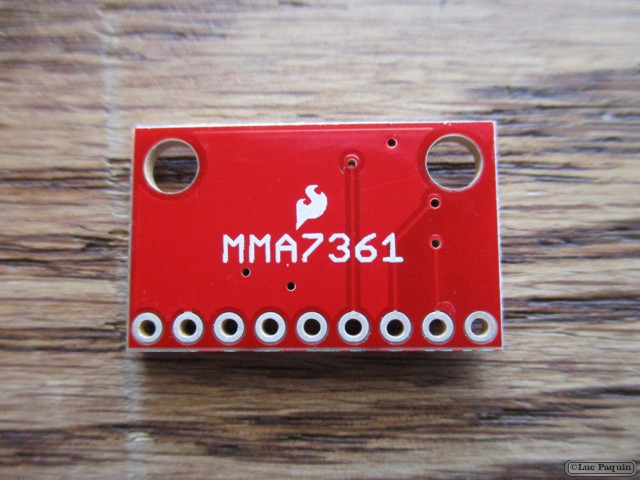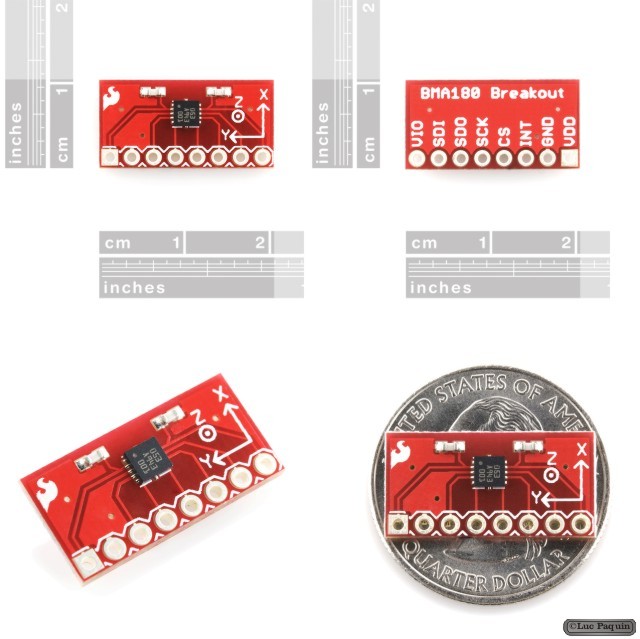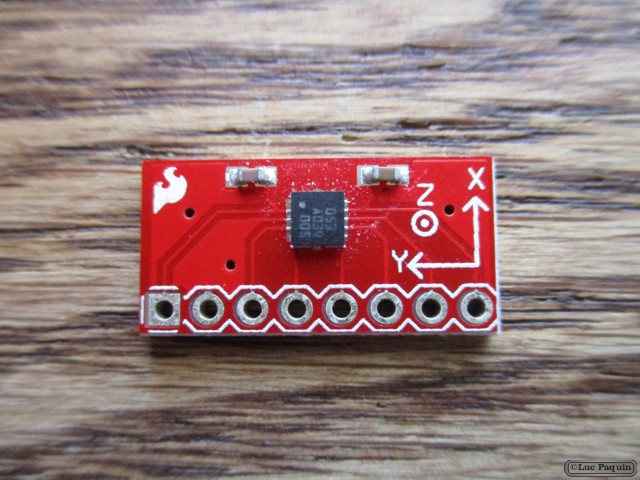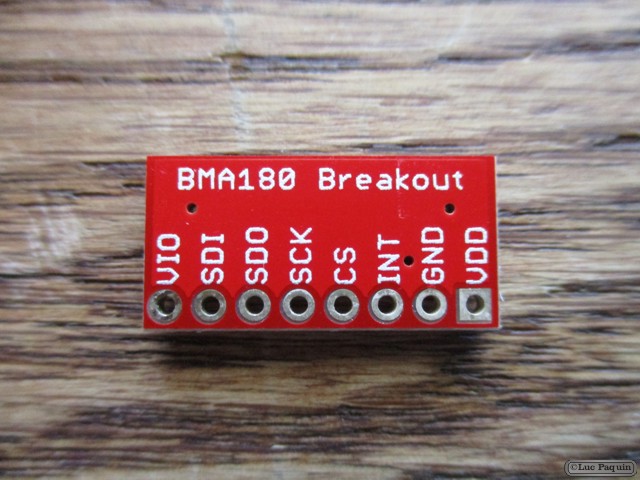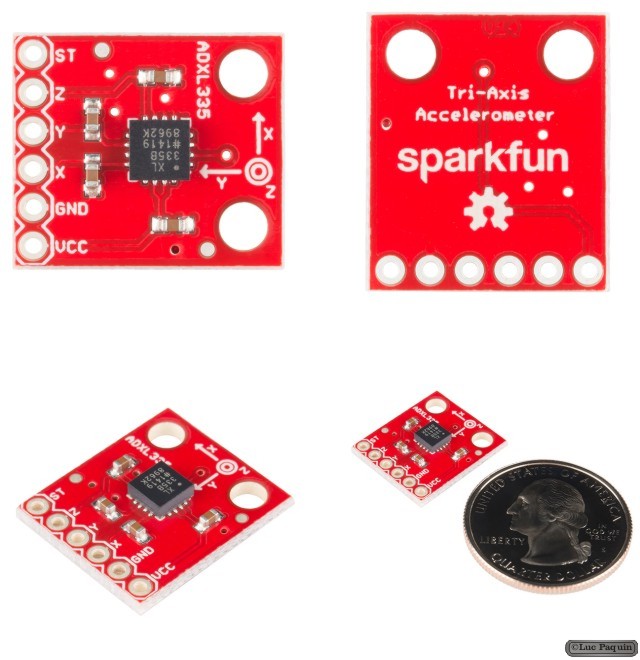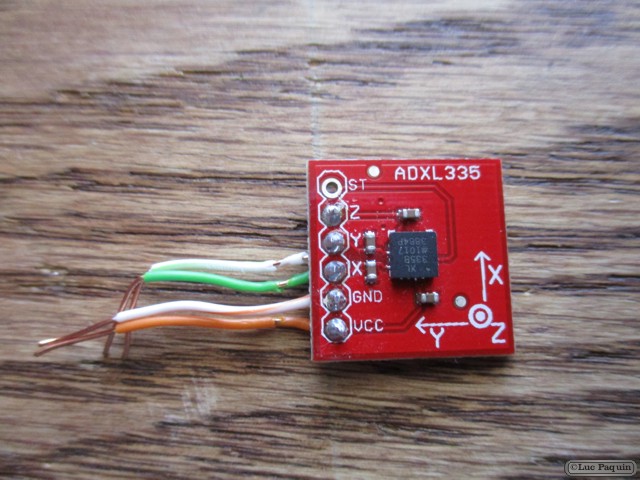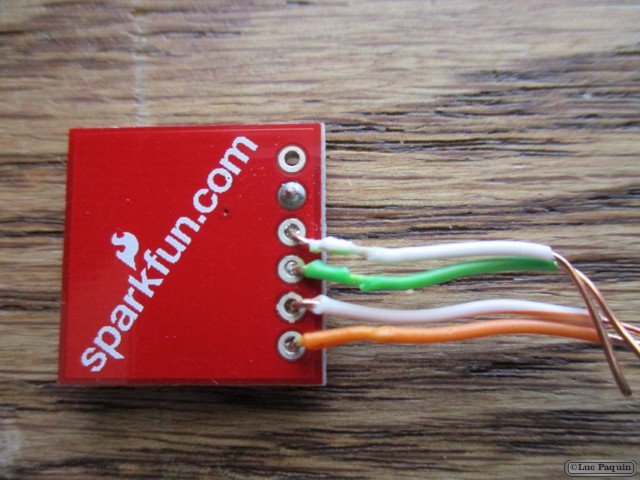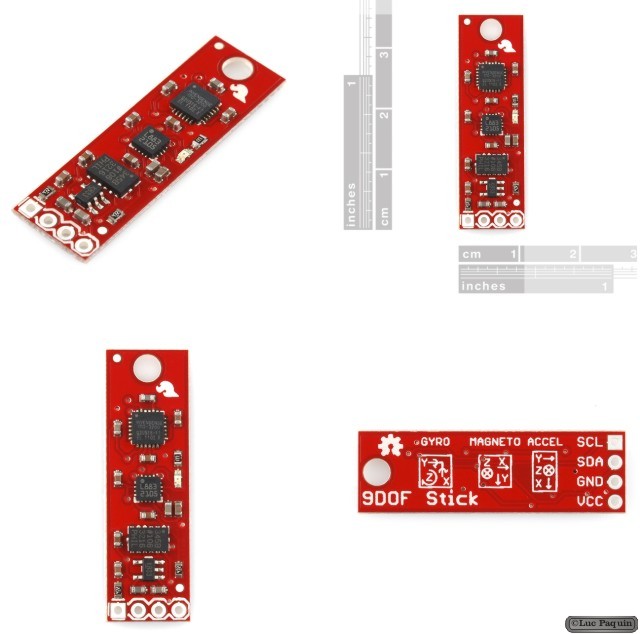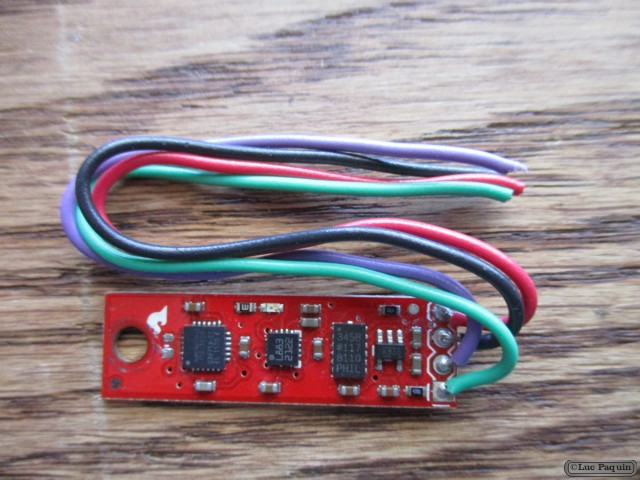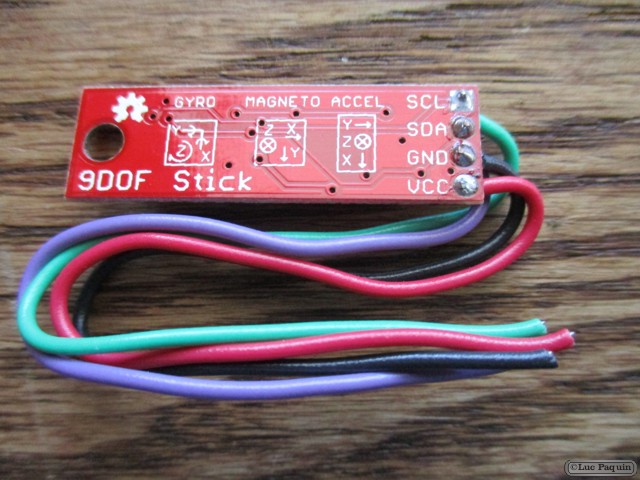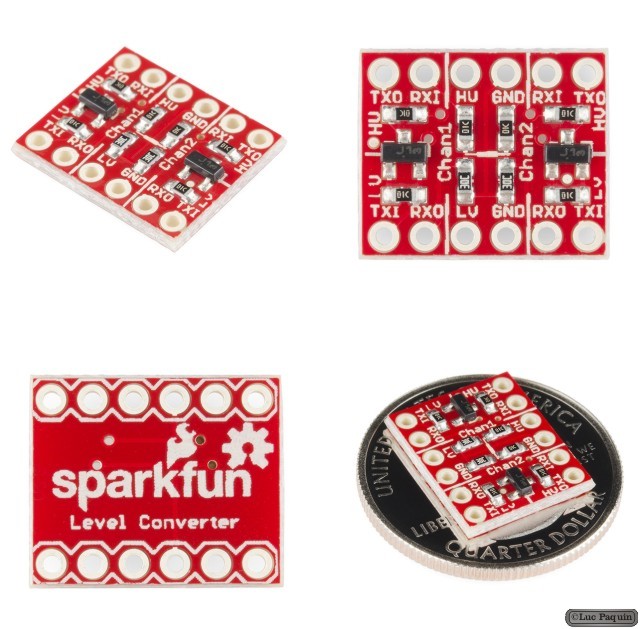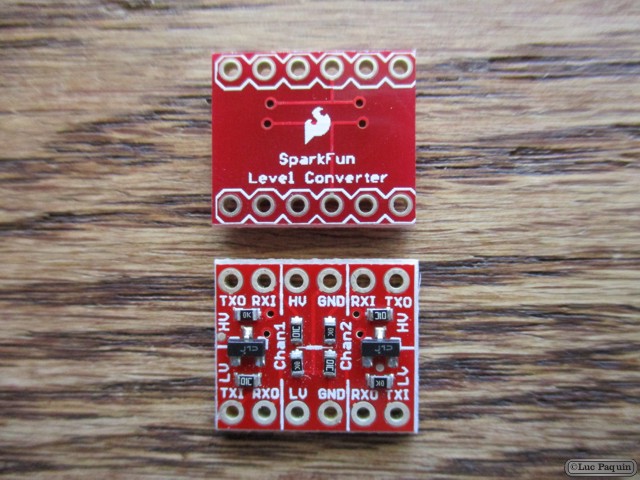SparkFun
SparkFun
SparkFun – Tri-Axis Gyro Breakout – L3G4200D
SparkFun: SEN-10612
Description: This is a breakout board for the L3G4200D low-power three-axis angular rate sensor. The L3G4200D is a MEMS motion sensor and has a full scale of ±250/±500/±2000 dps and is capable of measuring rates with a user-selectable bandwidth. These work great in gaming and virtual reality input devices, GPS navigation systems and robotics.
Features:
- Three selectable full scales (250/500/2000 dps)
- I2C/SPI digital output interface
- 16 bit-rate value data output
- 8-bit temperature data output
- Wide supply voltage: 2.4 V to 3.6 V
- Low voltage-compatible IOs (1.8 V)
- Embedded power-down and sleep mode
- Embedded temperature sensor
- High shock survivability
Don Luc
SparkFun – XBee Explorer Regulated
SparkFun: WRL-09132
Description: The XBee Explorer Regulated takes care of the 3.3V regulation, signal conditioning, and basic activity indicators (Power, RSSI and DIN/DOUT activity LEDs). It translates the 5V serial signals to 3.3V so that you can connect a 5V (down to 3.3V) system to any XBee module. The board was conveniently designed to mate directly with Arduino Pro boards for wireless bootloading and USB based configuration.
This unit works with all XBee modules including the Series 1 and Series 2.5, standard and Pro versions. Plug an XBee into this breakout and you will have direct access to the serial and programming pins on the XBee unit and will be able to power the XBee with 5V.
This board comes fully populated with 3.3V regulator (16V max input), XBee socket, four status LEDs, and a diode to allow 5V systems to communicate safely with the 3.3V XBees. This board does not include and XBee module. XBee modules sold below.
Don Luc
SparkFun – Breakout Board for XBee Module
SparkFun: BOB-08276
Description: This is a simple breakout board for the popular XBee product from Digi. This board breaks out all 20 pins of the XBee to a 0.1″ standard spacing dual row header. The spacing between 0.1″ headers is 0.5″ making it breadboard DIP friendly. We highly recommend using the female sockets to avoid having to solder the XBee permanently to the breakout board. This is the PCB only. Please order the accompanying 2mm sockets (you’ll need 2!) and 0.1″ headers below.
Don Luc
SparkFun – XBee 1mW Chip Antenna – Series 1 (802.15.4)
SparkFun: WRL-08664
Description: This is the very popular 2.4GHz XBee module from Digi. These modules take the 802.15.4 stack (the basis for Zigbee) and wrap it into a simple to use serial command set. These modules allow a very reliable and simple communication between microcontrollers, computers, systems, really anything with a serial port! Point to point and multi-point networks are supported.
Features:
- 3.3V @ 50mA
- 250kbps Max data rate
- 1mW output (+0dBm)
- 300ft (100m) range
- Built-in antenna
- Fully FCC certified
- 6 10-bit ADC input pins
- 8 digital IO pins
- 128-bit encryption
- Local or over-air configuration
- AT or API command set
Don Luc
SparkFun – Arduino Fio
SparkFun: DEV-10116
Description: The Arduino Funnel I/O (Fio) is a board designed by Shigeru Kobayashi, based on the original design from LilyPad.
Funnel is a toolkit to sketch your idea physically, and consists of software libraries and hardware. By using Funnel, the user can interface to sensors and/or actuators with various programming languages such as ActionScript 3, Processing, and Ruby.
Arduino Fio is compatible with Funnel. It has connections for a Lithium Polymer battery and includes a charge circuit over USB. An XBee socket is available on the bottom of the board. The Fio has been designed to be wirelessly reprogrammable. Checkout our tutorial on wireless bootloading!
Note: The miniUSB connector is used for battery charging only. To bootload new firmware, you will need an external serial connection over an FTDI Basic, FTDI cable, or other serial connection. Check the related products below.
Note: The XBee socket and FTDI connection live on the same TX/RX pins of the ATmega328. You will need to remove the XBee module while reprogramming over serial. We recommend using a wireless bootloader whenever possible to avoid this step.
Note: A portion of this sale is given back to Arduino LLC to help fund continued development of new tools and new IDE features.
Features:
- ATmega328V running at 8MHz
- Arduino Bootloader
- XBee socket
- Lithium Polymer battery compatible
- MCP73831T LiPo Charger
- Reset button
- On/Off Switch
- Status/Charge/RSSI LEDs
Don Luc
SparkFun – Triple Axis Accelerometer Breakout – MMA7361
SparkFun: SEN-09652
Description: This is a breakout board for Freescale’s MMA7361L three-axis analog MEMS accelerometer. The sensor requires a very low amount of power and has a g-select input which switches the accelerometer between ±1.5g and ±6g measurement ranges. Other features include a sleep mode, signal conditioning, a 1-pole low pass filter, temperature compensation, self test, and 0g-detect which detects linear freefall. Zero-g offset and sensitivity are factory set and require no external devices.
This breadboard friendly board breaks out every pin of the MMA7361L to a 9-pin, 0.1″ pitch header. The sensor works on power between 2.2 and 3.6VDC (3.3V optimal), and typically consumes just 400µA of current. All three axes have their own analog output.
Features:
- Two selectable measuring ranges (±1.5g, ±6g)
- Breadboard friendly – 0.1″ pitch header
- Low current consumption: 400 µA
- Sleep mode: 3 µA
- Low voltage operation: 2.2 V – 3.6 V
- High sensitivity (800 mV/g at 1.5g)
- Fast turn on time (0.5 ms enable response time)
- Self test for freefall detect diagnosis
- 0g-Detect for freefall protection
- Signal conditioning with low pass filter
- Robust design, high shocks survivability
Dimensions: 0.90 x 0.50″
Don Luc
SparkFun – Triple Axis Accelerometer Breakout – BMA180
SparkFun: SEN-09723
Description: This is a breakout board for Bosch’s BMA180 three-axis, ultra-high performance digital accelerometer. The BMA180 provides a digital 14-bit output signal via a 4-wire SPI or I2C interface. The full-scale measurement range can be set to ±1g, 1.5g, 2g, 3g, 4g, 8g or 16g. Other features include programmable wake-up, low-g and high-g detection, tap sensing, slope detection, and self-test capability. The sensor also has two operating modes: low-noise and low-power.
This breadboard friendly board breaks out every pin of the BMA180 to an 8-pin, 0.1″ pitch header. The board doesn’t have any on-board regulation, so the provided voltage should be between 1.62 and 3.6V for VDD and 1.2 to 3.6V for VDDIO. The sensor will typically only consume 650uA in standard mode.
Features:
- Wide variety of measurment ranges (±1g, 1.5g, 2g, 3g, 4g, 8g and 16g)
- 14- or 12-bit ADC conversion
- 2 selectable I2C addresses
- Programmable integrated digital filters (no external components necessary)
- 8 low-pass filters
- 1 high-pass filter
- 1 band-pass filter
- Programmable interrupt features:
- Wake-up
- Low-g detection
- High-g detection
- Tap sensing
- Slope detection
- 2 main standard modes: low-noise and low-power
- Sleep mode
- Wake-up mode
- Self-test capability
Dimensions: 0.80 x 0.40″
Don Luc
SparkFun – Triple Axis Accelerometer Breakout – ADXL335
SparkFun: SEN-09269
Description: Breakout board for the 3 axis ADXL335 from Analog Devices. This is the latest in a long, proven line of analog sensors – the holy grail of accelerometers. The ADXL335 is a triple axis MEMS accelerometer with extremely low noise and power consumption – only 320uA! The sensor has a full sensing range of +/-3g.
There is no on-board regulation, provided power should be between 1.8 and 3.6VDC.
Board comes fully assembled and tested with external components installed. The included 0.1uF capacitors set the bandwidth of each axis to 50Hz.
Dimensions: 0.7×0.7″
Don Luc
SparkFun – 9 Degrees of Freedom – Sensor Stick
SparkFun: SEN-10724
Description: The SparkFun 9DOF Sensor Stick is a very small sensor board with 9 degrees of freedom. It includes the ADXL345 accelerometer, the HMC5883L magnetometer, and the ITG-3200 MEMS gyro. The ‘stick’ has a simple I2C interface and a mounting hole for attaching it to your project. Also, the board is a mere 0.036″ thick (0.093″ overall), allowing it to be easily mounted in just about any application.
Dimensions: 1.37×0.42″
Don Luc
SparkFun – Logic Level Converter
SparkFun: BOB-11978
Description: If you’ve ever tried to connect a 3.3V device to a 5V system, you know what a challenge it can be. The SparkFun logic level converter is a small device that safely steps down either 5V signals to 3.3V or steps up 3.3V to 5V. This level converter also works with 2.8V and 1.8V devices. Each level converter has the capability of converting 4 pins on the high side to 4 pins on the low side with two inputs and two outputs provided for each side.
The level converter is very easy to use. The board needs to be powered from the two voltages sources (high voltage and low voltage) that your system is using. High voltage (5V for example) to the ‘HV’ pin, low voltage (2.8V for example) to ‘LV’, and ground from the system to the ‘GND’ pin.
This revision of the Logic Level Converter fixes the issue with the board not stepping down from 5V to 3.3V correctly.
Dimensions: 0.5×0.6″
Don Luc
